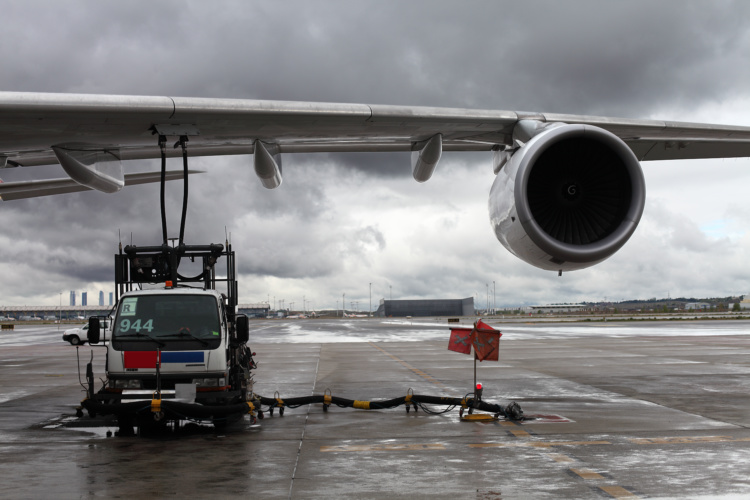Despite severe restrictions on global air travel during the pandemic, it is forecasted that international aviation will increase in the next few decades. As such, it is imperative we rebuild the aviation industry in a sustainable, greener way.
The UK was the first major economy to commit to deliver net zero aviation by 2050 – and later establishing the Jet Zero Council – the UK’s first major step in transforming an industry which has contributed over 2% of global CO2 emissions pre-pandemic[1>. On an international scale, further commitment to sustainable aviation was made at COP26 with the launch of the International Aviation Climate Ambition Coalition (ICAC) where 26 countries, including the UK, pledged to reduce aviation emissions in a bid to meet global emissions targets. This sets the UK in a strong position going into the ICAO General Assembly in September 2022 where nations present their work towards agreeing a long term global aspirational goal for international aviation.

Achieving net zero emissions is not an easy feat and there are many moving parts at play. An integral part of this journey is innovators, who provide pioneering solutions to decarbonise the industry. Through Innovate UK’s Sustainable Innovation Fund, we have been able to support a number of early-stage projects and businesses that are delivering innovative products and services that will help rebuild the aviation and aerospace sectors, support the Government’s net zero emissions targets and the transition to a greener society.
Here are my top five sustainable aviation innovations that are using Innovate UK's Sustainable Aviation Fund to transform the industry:
- TISICS – Based in Farnborough, TISICS is a business pioneering a lighter, faster spacecraft and aircraft components with world-leading Metal Matrix Composite (MMC) technology and additive manufacture technologies. TISICS lightweight materials technology is helping to accelerate the shift to low carbon transport, part of the Government's Clean Growth Strategy. It delivers 40% weight savings on aircraft landing-gear and structures and up to 70% on aero-engine components.
- Maverick Aviation Ltd – Established to develop jetpacks that enable experts, such as first responders, rescue services, defence and security, to reach inaccessible tasks rapidly. Maverick Aviation’s jetpack uses sustainable fuels and a patent-pending approach to vertical take-off and landing (VTOL) – the technology that allows aircrafts to take off, hover and land vertically without the need of a runway. As a result, its jetpack provides a safe and steady flight platform so operators can reach previously inaccessible environments over land and water in disaster relief or rescue operations. It also enables engineers to access elevated or remote critical national infrastructure for maintenance and repairs.
- Signol – With the pandemic significantly reducing the bottom line of the aviation sector and flight volumes likely to be lower than expected into the near future, the path to profitability for the sector is through improved operational efficiency. Signol is helping shift the sector onto a lower carbon path with technology which encourages flying that reduces emissions. Its software system uses behavioural science and data analytics to monitor airline pilots’ performance against individual targets, providing personalised and targeted feedback on fuel-use behaviours designed to nudge pilots into greater fuel efficiency, reducing operating costs and carbon emissions.
- Emu Analytics Limited – Its project, ‘Planes, Trains and Automobiles’ developed alongside partners Plane Finder and Ferrovia, is a data-driven software solution which aims to reduce passenger congestion and dwell times airports and railway stations. It brings together real-time data from different transport providers such as Network Rail to inform passenger aircraft movement. Emu alerts airports about rail and air transport delays and potential disruptions so they can inform their customers and recommend adjustments to their journeys. This helps to reduce the potential for passenger congestion, bottlenecks and dwell times at airports and railway stations, helping to support and promote more sustainable transport options to get to and from the airport.
- MOOG Controls Ltd– Airplanes use lots of machines with electric motors that can be subject to the failure of critical components at elevated temperatures, which research has shown to be a result of the degradation of insulation. Moog aims to improve the temperature capability of its electrical machines, so motors can operate in areas that they currently cannot. This is done by eliminating the need for cooling systems, which have been needed until now to allow motors to continue working under higher temperatures. For aircrafts, the removal of heavy and expensive cooling systems will save weight and therefore reduce emissions.
Innovate UK KTN – part of the Government’s innovation agency, Innovate UK – exists to connect innovators with new partners and opportunities, accelerating ambitious ideas into value for our economy and society. Innovate UK KTN has a network of over 46,000 unique organisations and 234,000 innovators. The Sustainable Innovation Fund, set up by Innovate UK in 2020, is a £250 million public investment programme that provides financial backing and support for innovation projects.










Water Sector Talent Exodus Could Cripple The Sector
Well let´s do a little experiment. My last (10.4.25) half-yearly water/waste water bill from Severn Trent was £98.29. How much does not-for-profit Dŵr...